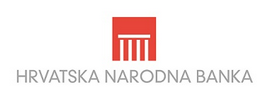At the meeting held on Wednesday, May 8, 2002, the Council of the Croatian National Bank reviewed the CNB's Annual Report for 2001 and concluded that in 2001 the central bank successfully realized its main objective of maintaining low inflation. Last year retail prices grew by 2.6 percent, whereas core inflation (administrative and seasonal products' prices excluded) was 1.7 percent. The low level of inflation has been maintained this year as well, with retail prices being only 2.2 percent higher in April 2002 than in April 2001 and only 2.9 percent higher in the first four months of 2002 compared with the same period in 2001.
The main goal of the central bank was attained without a restrictive monetary policy stance. The CNB created and maintained the high liquidity of the banking system, enabling banks - after the consolidation in 2000 - to increase strongly household and corporate lending in 2001, whereas interest rates continued falling. In 2001, base money (money created by the central bank) grew by as much as 52 percent, currency in settlement accounts of enterprises, households and other sectors and currency outside banks grew by a total of 32 percent, while bank lending to the non-banking sector rose by 23 percent. Such developments contributed to the economic growth without generating inflationary pressures. After the recession in 1999 and the beginning of economic revival in 2000, GDP grew by 4.1 percent last year.
The central bank created additional domestic currency liquidity primarily by purchasing foreign exchange on the foreign exchange market, thus preventing the appreciation of the kuna. With net foreign exchange purchases in 2001, the Croatian National Bank created as much as 7,297 million kuna of primary liquidity. Total international reserves of the central bank grew in 2001 by a record USD 1,152 million, reaching USD 4,677 million on the last day of 2001. This increase was the outcome of net foreign exchange purchases on the market, income from international reserves management (the average yield was 4.63 percent on the euro portfolio, and 4.72 percent on the dollar portfolio), and gold and foreign exchange inflow from the distribution of former SFRY assets in the BIS (USD 126 million).
It is further worth mentioning that in conditions of high foreign exchange inflows and relatively restricted possibilities for major changes in monetary policy instruments, the central bank reduced the general reserve requirement rate from 23.5 percent to 19 percent and unified the rate and calculation base of the reserve requirement. Thus the Croatian National Bank carried out its intention to reduce the importance of this monetary instrument.
In 2001, the banking system was characterized by increased effectiveness and stability. This is illustrated by reduced cost to assets ratios and growing assets per employee. Profitability increased both absolutely and as measured by return on average assets and return on average equity. The quality of bank lending improved, which resulted in a smaller percentage of bad loans and provisions. Confidence in the banking system strengthened, as illustrated by the fact that foreign currency remained in the banking system even after the conversion of the euro-in currencies into the euro had been completed.
This conclusion is supported by the fact that difficulties faced by Riječka banka at the beginning of this year did not transfer to other banks, also due to the successfully performed central bank role of the "lender of the last resort". With fast and decisive measures taken by the Croatian National Bank and the Croatian government - liquidity injections, change of the bank's owner and management, and its subsequent privatization - the confidence in the bank was regained and the run on the bank stopped. Savings and other deposits remained safe and costs for tax payers were avoided.
In view of the case of Riječka banka, the members of the Council were briefed in more detail about banking supervision regulations and practices in order to review the necessity and possibility of improving the current regulations and their application, bearing in mind that the final goal is to protect savers and depositors as well as stability and safety of the whole banking system. It was especially emphasized that the banking supervision area of the central bank neither manages business activities of a bank's management nor checks every transaction it makes, but verifies whether the bank operates in accordance with regulations and assesses its methods and effectiveness of risk management.
The Council estimated that the current legal and regulatory framework is largely satisfactory and that it will be in complete accordance with the European Union guidelines and relevant international standards once the new Banking Law and all relevant by-laws have been adopted. The Council also concluded that the methodology of Croatian banking supervision reflects the achievements of modern supervisory practices, with the structure of the CNB's Bank Supervision Area adapted to their requirements. In line with international achievements and standards, the Croatian National Bank shall continue to improve its supervisory function to timely recognize, monitor and appraise current and new risks in banking. This, however, does not include taking the role and responsibility of bank management boards and other key agents in surveillance of bank operations.
At the Wednesday meeting, the CNB Council gave its approval to Erste Bank der Österreichischen Sparkassen AG Vienna to acquire up to 100 percent of voting shares in Riječka banka d.d., Rijeka. Prva stambena štedionica d.d., Zagreb was granted approval to acquire 100 percent of voting shares in Hrvatska stambena štedionica d.d., Varaždin and merge with that savings bank. Raiffeisen International Beteiligungs AG was granted approval to acquire 9.77 percent of shares in Raiffeisenbank Austria d.d., Zagreb.
